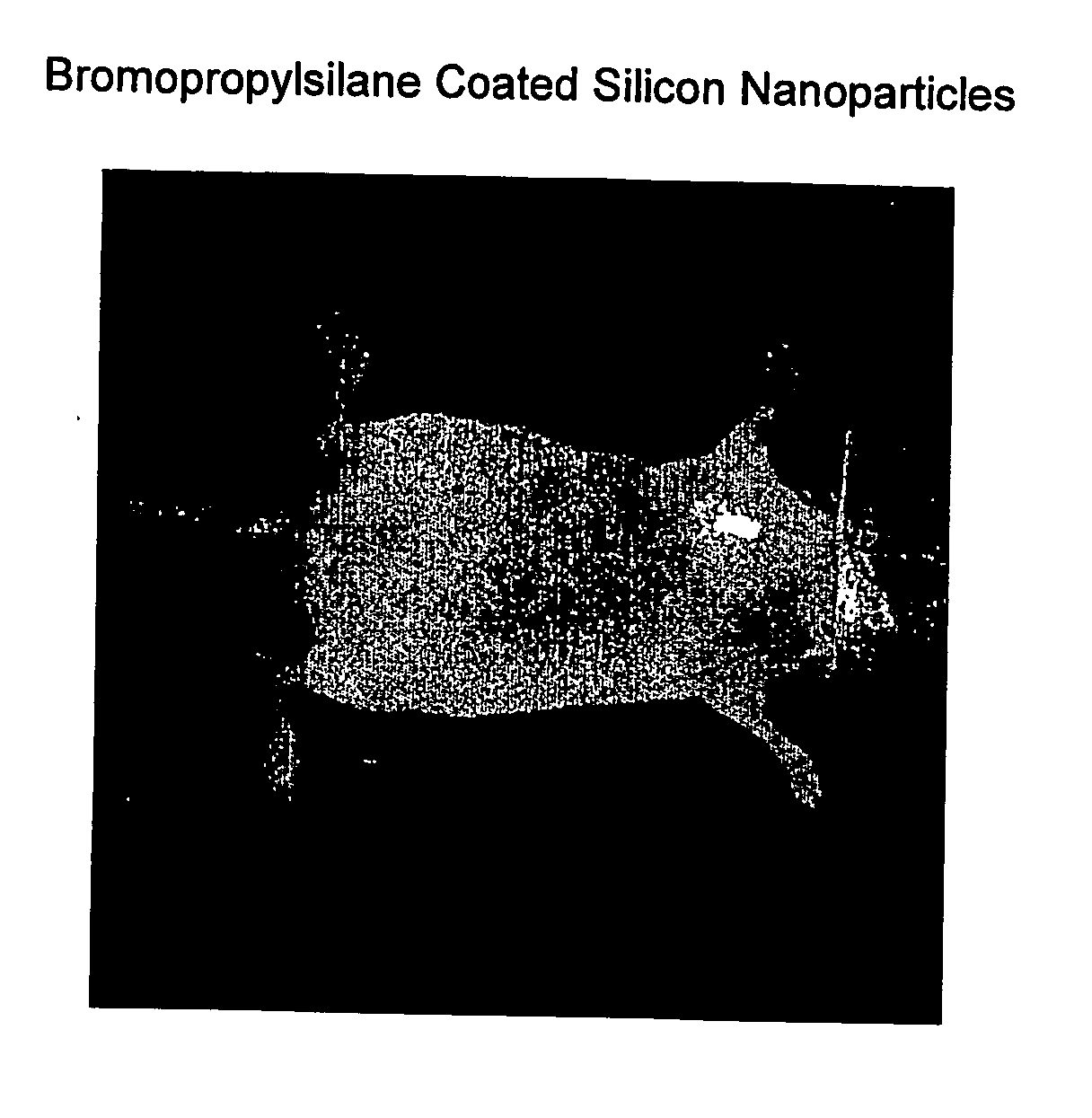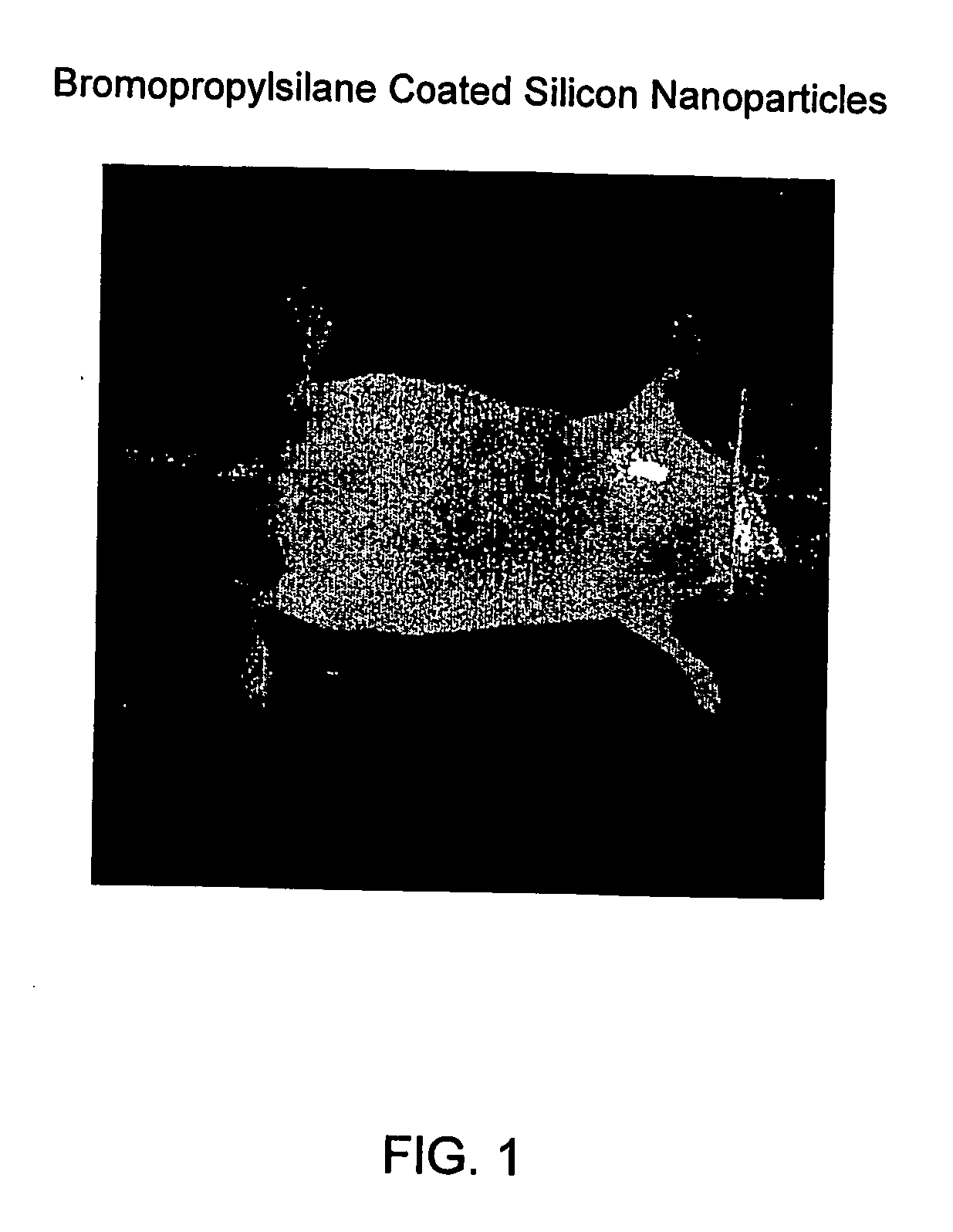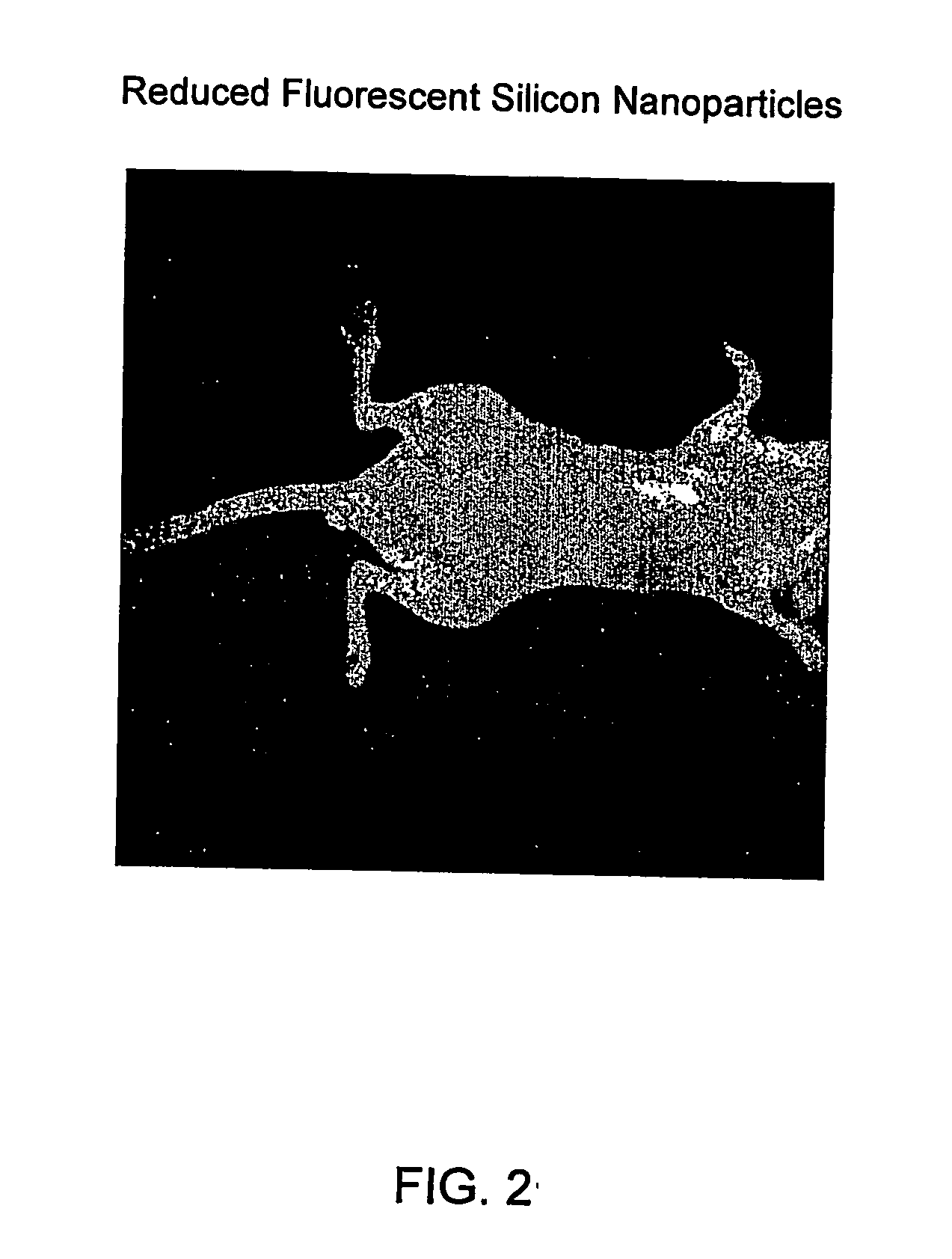Biocompatible Fluorescent Silicon Nanoparticles
a fluorescent silicon nanoparticle, biocompatible technology, applied in the field of clinical imaging modality, can solve the problems of inability to use the above described quantum dots or semi-conductor nanoparticles in vivo applications, ineffective labeling of cells, and inability to meet the requirements of clinical imaging.
- Summary
- Abstract
- Description
- Claims
- Application Information
AI Technical Summary
Benefits of technology
Problems solved by technology
Method used
Image
Examples
example 1a
[0122]Sodium metal (230 mg, Aldrich) was cut into small pieces under hexane and transferred to a 2-neck, oven dried 250 mL round bottom flask (RBF) flushed with nitrogen and containing of naphthalene (1.0 g, Aldrich) and a glass stir bar. The flask was evacuated and backfilled with nitrogen 3 times, then 20 mL of anhydrous THF (Aldrich) was added via syrnge. The mixture was stirred for 16 hours at room temperature (RT) resulting in a dark green solution of sodium naphthalenide. Silicon tetrachloride (224 uL, Aldrich) was dissolved in 30 mL anhydrous TBF in a nitrogen flushed, 2-neck, 500 mL RBF with a stirbar. The above sodium naphthalenide solution was then transferred to the flask rapidly via cannula at RT, resulting in the immediate formation of a cloudy brown suspension.
[0123]The brown suspension was reacted with 1.0 mL of water added rapidly by syringe. The cloudy brown suspension immediately turned a light, sandy brown color. The TUF was removed in vacuo and 40 mL of water was...
example 1b
[0125]Example 1a was repeated substituting 265 μL hexachlorodisilane for silicon tetrachloride. The product was reacted with 1.0 μL water as per Example 1 resulting in particles that exhibit bright blue fluorescence under irradiation at 366 nm. The nanoparticles were treated with HCl or buffer before use.
[0126]PLE / PL: λmax excitation=336 nm; λmax emission=460 nm.
example 2
[0127]Sodium metal (230 mg, Aldrich) was cut into small pieces under hexane and transferred to a 2-neck, oven dried 250 mL round bottom flask (RBF) flushed with nitrogen and containing of naphthalene (1.0 g, Aldrich) and a glass stir bar. The flask was evacuated and backfilled with nitrogen 3 times, then 20 mL of anhydrous THF (Aldrich) was added via syringe. The mixture was stirred for 16 hours at room temperature (RT) resulting in a dark green solution of sodium naphthalenide. Silicon tetrachloride (224 uL, Aldrich) was dissolved in 30 mL anhydrous THF in a nitrogen flushed, 2-neck, 500 mL RBF with a stirbar. The above sodium naphthalenide solution was then transferred to the flask rapidly via cannula at RT, resulting in the immediate formation of a cloudy brown suspension. Octanol (1.65 ml) was then added. Solvent was evaporated and the naphthalene was removed under vacuum with heating in a water bath at 50-60° C. The nanoparticles were treated with HCl or buffer before use. The ...
PUM
| Property | Measurement | Unit |
|---|---|---|
| Size | aaaaa | aaaaa |
| Nanoscale particle size | aaaaa | aaaaa |
| Nanoscale particle size | aaaaa | aaaaa |
Abstract
Description
Claims
Application Information
 Login to View More
Login to View More - R&D
- Intellectual Property
- Life Sciences
- Materials
- Tech Scout
- Unparalleled Data Quality
- Higher Quality Content
- 60% Fewer Hallucinations
Browse by: Latest US Patents, China's latest patents, Technical Efficacy Thesaurus, Application Domain, Technology Topic, Popular Technical Reports.
© 2025 PatSnap. All rights reserved.Legal|Privacy policy|Modern Slavery Act Transparency Statement|Sitemap|About US| Contact US: help@patsnap.com



